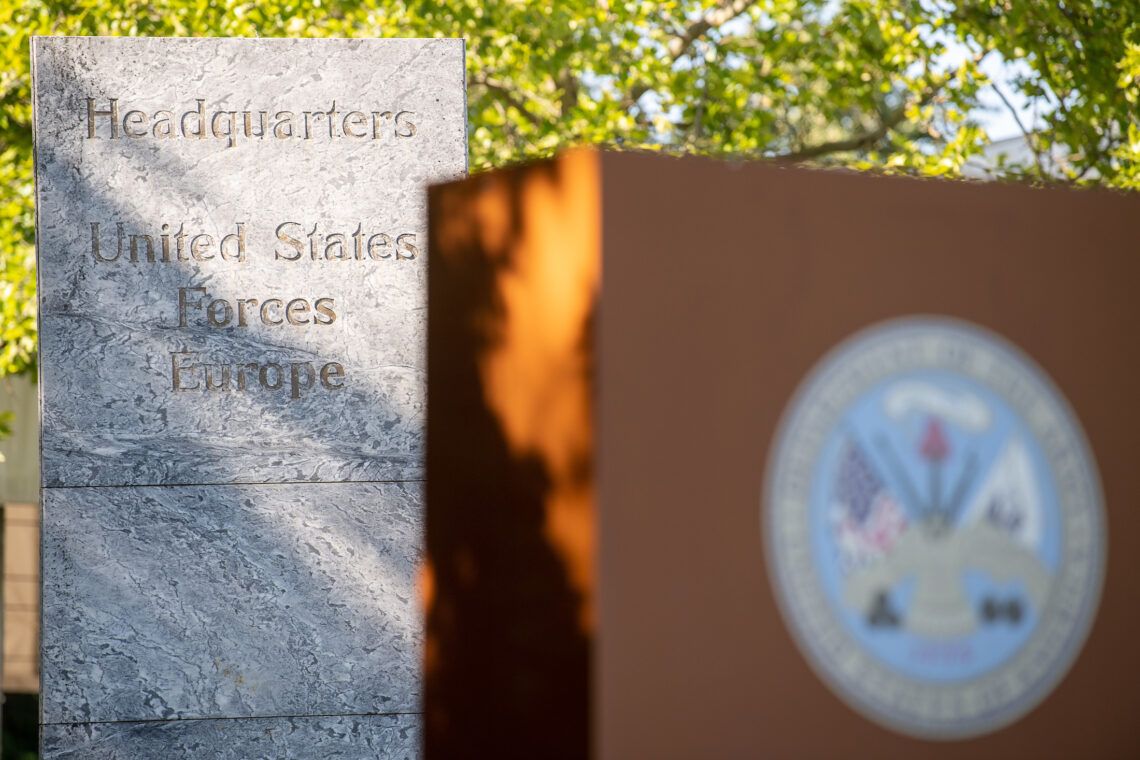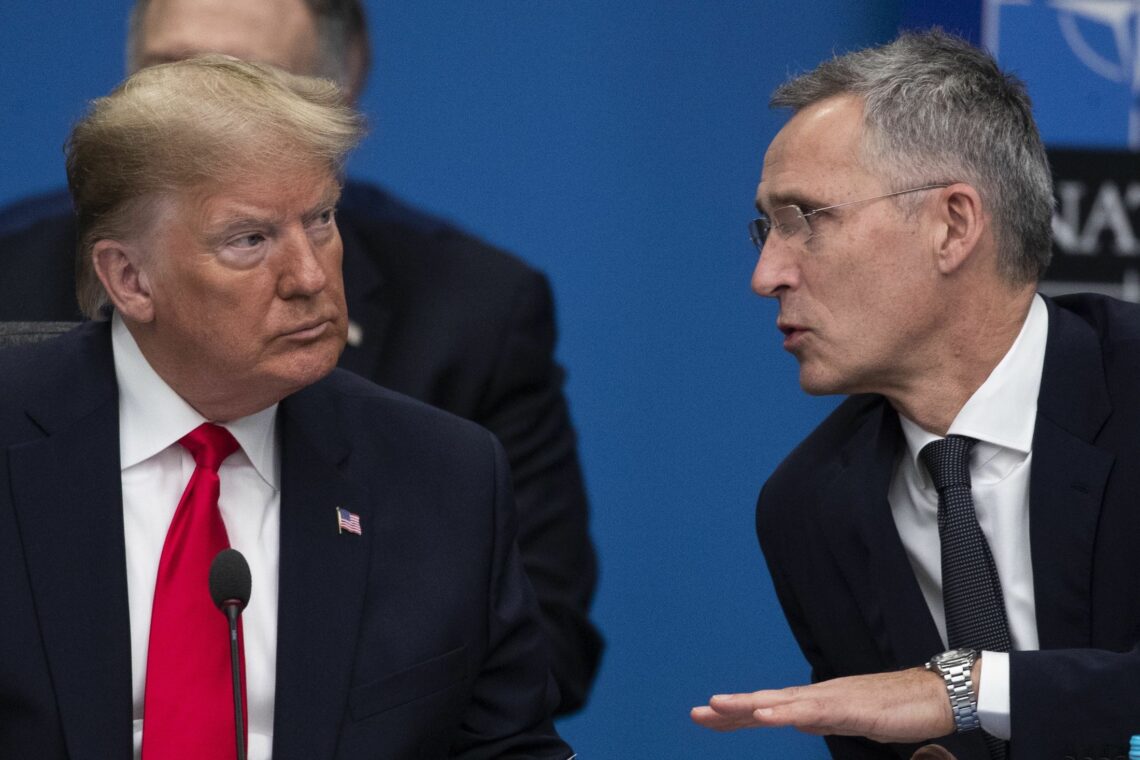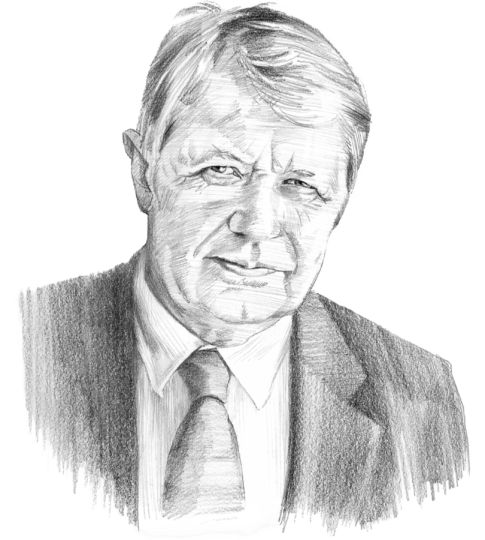Departing U.S. troops leave tough questions behind
President Trump has announced a long-discussed redeployment of American troops in Europe. Wielded as a “punishment” by the U.S. administration, the move is actually less consequential than critics and the media would admit. But it does raise strategic questions.

In a nutshell
- The United States will withdraw residual American troops in Europe
- Despite criticism, the immediate military impact of this move is minor
- However, Europe ought to reconsider its long-term military strategy
On July 29, 2020, the United States government confirmed plans for a withdrawal of some of its residual forces in Europe, primarily from Germany to Italy and Belgium.
These forward developments include but a tiny portion of the present U.S. overall strength, and their redeployment can be far better justified than, for example, the redeployments from France to Belgium in 1967. Nevertheless, they raise key questions about Europe’s military and strategic future.
What rationale?
During the early 1950s, it was not obvious that the U.S. would leave forces in Europe after the complete withdrawal of Russian forces behind the Russian Federation’s borders. After all, in 1945, it had been the other way around: the Soviet Union kept its full force structure in Central and Eastern Europe, while the U.S. kept only some 50,000 troops as “occupation forces.”
Yet the Korean experience in the early 1950s had a lasting impact, after the Chinese intervention nearly led to military disaster for the U.S. President Harry Truman. He reacted decisively and, ever since, the presence of American troops in Europe (and in particular Germany) has been an essential element of U.S. policy. The redeployment of four divisions to Germany and the establishment of NATO’s system of regional commands and infrastructures became a center of European security. As Gen. Dwight D. Eisenhower, the incoming U.S. supreme commander, stated in 1950 to reassure Congress, “we have to devise a scheme that we can support, if necessary over the next 20 years, 30 years, whatever may be the time necessary, as long as the threat … of aggression remains in the world.”
But he added a key qualification: “the transfer of certain of our units should be in direct ratio to what Europe is doing.” Since then, that framework has been a primary but changing issue in European and East-West affairs. During the 1950s, Europe became the essential mission for the U.S. Army, with force levels rising. During the 1960s, detente superseded the military criteria. The Vietnam war distracted from Europe and led to major redeployments from Europe to Southeast Asia. The 1980s saw a huge technological revolution, Joint Vision 2010, which promised a large-scale withdrawal to the U.S. from Europe that would be backed by capabilities for rapid global power projection.
Then, the end of the Cold War – with the complete withdrawal of Soviet forces behind Russian borders – ended the rationale for a U.S. military presence. But like the USSR in 1945, this time, the U.S. kept its force structure in Europe, albeit with lowered force levels.
A new balance
Since then, the “scheme” for keeping U.S. forces in Europe changed, allowing for NATO enlargement in Central and Eastern Europe and as a platform for out-of-area missions. But the wars in the Middle East frustrated U.S. hopes from Joint Vision 2010, even if they inspired Russia and China.
Combined with the increasing political fatigue, this resulted in a tendency to contract U.S. global power, reinforced by the collapse of the Soviet Union. However, the contraction was not accompanied by a redefinition of the American global role; though at reduced numbers, U.S. forces remained in Europe despite the complete withdrawal of Russian forces behind their own borders.
The outrage over the redeployments of American troops in Europe hardly reflects the preceding 70-year chain of events.
In regional conflicts, such as Libya, the U.S. confined its role to “leading from behind.” By then, U.S. force levels were nearing what had preceded the essential redeployment in the early 1990s, although with a profoundly different mission and capabilities. The presence was enough to keep the NATO Command structure and integration meaningful, but served primarily as a basis and infrastructure for missions in Africa and Asia. The Ramstein base in Germany, by then, had become pivotal for U.S. global force projection.
By the time the Pentagon announced its redeployment plans on July 29 of this year, Europe had indeed not lived up to what Washington expected as a precondition of (and eventually a replacement for) U.S. forces in Europe. American global military supremacy still exists, but it is hardly backed by resulting political achievements, besides one exception. While the rationale and strength of U.S. forces in Europe varied with political circumstances, their continued presence was an essential condition for the most far-reaching geopolitical shift in Europe since 1945: the Russian withdrawal.
Reality check
The present outrage over the pending redeployments of American troops in Europe hardly reflects this 70-year-long chain of events. The reaction, at best, can thus be understood as symbolic politics, which typically has an instrumental and an expressive dimension.
This case serves political purposes in both dimensions. The global power of the U. S., while declining in terms of geopolitics and capabilities, is likely to endure for some time, depending on how it uses its strategic assets – the coercive value of denied access to the American market through sanctions and tariffs; the threat of withholding and withdrawing military protection, e.g., by troop redeployments; and the global dominance of U.S. services.
Needless to say, the redeployment of up to 12,000 U.S. troops will not cause a military imbalance that increases military risks in Europe – let alone one that requires corrective military measures. Some of the planned redeployments, namely regarding the EUCOM and the AFRICOM Commands, are even improvements; the former, because of the colocation with the NATO headquarters, and the latter because it is closer to the theater concerned and possibly colocated with the Southern Command.
Besides, the U.S. bases most critical for global operations (above all, Ramstein) will remain – and for good reason, especially from an American point of view. The same is true for the military training area at Grafenwohr. Polish pressure to redeploy most of that presence to Poland has not found support in Washington, not least because it would have added tensions between the U.S. and Russia as well as within NATO. Moving up 1,000 soldiers to Poland is, however, still being considered, and redeploying the 2nd Stryker Cavalry Regiment to the U.S. follows the earlier Joint Vision 2010 logic.

While all of that is reasonable in a military context, it is accompanied by political thundering from the White House, presented as a “punishment” of Germany for not having paid its dues to the U.S. The blame is nothing new, but associating it to a so-called unfulfilled obligation is.
Of course, President Donald Trump himself is not known for sticking to formal obligations. And as for the blame, it is worth going back to 1994, i.e. years before Mr. Trump had even begun to consider running for the presidency. In September 1994 he published an open letter in major U.S. newspapers (footing the $94,800 bill himself), where he blamed Germany and “the allies who won’t help.”
While the world (and notably Europe) have undergone secular changes, Mr. Trump’s claims and blames have remained the same ever since 1994. In fact, he now considers increased European defense spending as a personal success, implying that it eases the burden of American taxpayers.
Right question, wrong reason
So far, European and German reactions to the announced U.S. redeployment have been largely fixated on the American president’s rhetoric of stereotypes. After all, that discourse is similar to his framing of new sanctions and tariffs as measures to “correct unjust trade imbalances.” Europe is now presented with two ways to respond. One is to evaluate the redeployments in terms of their military relevance. This specifically is of minor importance, but it raises the more fundamental issue of how to keep residual U.S. forces in Europe and Germany.
There are profound geostrategic reasons for doing so, but they require a new and yet-to-be-agreed paradigm – something beyond the institutional instincts for self-preservation of the recent past. To compare Mr. Eisenhower’s expectation of an eventual European self-defense or of the end of the Soviet threat to Europe with Mr. Trump’s “punishments” in a post-Cold War era is unserious.
The other European response would be to take Mr. Trump’s “punishments” for what they are, and to rediscover that the transatlantic geopolitical future will be decided in large part by how the two sides rebuild the political fabric of their shared existential interests. This would be more than a return to the past; it is the project of a common future.
The actual European and German proposals have ranged from punishing Mr. Trump and the U.S. by canceling armament projects, to calls for increased defense efforts, a European defense or even European strategic autonomy – 70 years since President Eisenhower’s precondition for stationing American forces in Europe.
There are yet more compelling reasons to rethink Europe’s military and strategic future.
The parochialism of the responses so far displays the near-total loss of European strategic culture – a prerequisite for a European defense. Most responses use the American decision as a lever in domestic controversies. For example, stopping the partial replacement of the Tornados is intended to end the German role in NATO’s nuclear sharing program; the 60 remaining American B61 nuclear bombs are assumed to be carried by German Tornados. In reality, the whole scheme is a Cold War zombie. Today’s NATO has no nuclear role, and there is no plausible scenario that calls for using tactical fighters with nuclear missions, let alone German fighters.
Scenarios
All of this could prompt calls for new missions for the Tornado replacement, or even completely alternative procurement options (i.e., European solutions). And yet, so far only penalizing Mr. Trump is on the agenda. As for the European strategic autonomy, the fact that it is justified in terms of the impact of pending U.S. redeployments and the withdrawal of the “Stryker Regiment” (which could rapidly be returned) betrays the shallowness of Europe’s strategic thinking.
At this stage, there exist no initiatives to implement the European defense effort that President Eisenhower and the U.S. had counted on 70 years ago as part of the scheme for American deployment in Europe.
In truth, Mr. Trump’s retribution has no bearing, and became relevant only because of European indolence and American preservation interests. However, there exist more compelling reasons for rethinking and restructuring Europe’s military and strategic future than the current redeployment plans.
These require an agonizing reappraisal that will need to be conducted in national capitals rather than Brussels, let alone the media world of stereotypes. For Europe to prevail in its future geopolitical competition, it must return to the fundamentals of the European state system and its external role. The present outrage is as good as any reason to initiate that strategic reappraisal.








